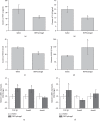Effect of Polysaccharides from Bletilla striata on the Healing of Dermal Wounds in Mice
- PMID: 31781284
- PMCID: PMC6855086
- DOI: 10.1155/2019/9212314
Effect of Polysaccharides from Bletilla striata on the Healing of Dermal Wounds in Mice
Abstract
Bletilla striata has been largely used in traditional folk medicine in China as a wound healing agent and to treat gastritis and several other health problems. Some studies have shown that plant polysaccharides may have the ability to promote wound healing. The aim of this work was to evaluate the wound healing activity of the polysaccharide extracted from Bletilla striata. Firstly, a Bletilla striata polysaccharide was extracted by water extraction and alcohol precipitation and characterized by Fourier transform infrared spectroscopy. The Bletilla striata polysaccharide was then tested for cell migration and proliferation using the mouse fibroblast cell line. Then, the Bletilla striata hydrogel was fabricated for acute wound health care of the mouse full-thickness excision. The results showed that the BSP enhanced the proliferation and migration of L929 cells. The superior wound healing capacity of the BSP hydrogel was demonstrated that it significantly accelerated the wound healing process in vivo in full-thickness skin defect wounded models. Compared to the saline group, the BSP hydrogel could accelerate wound healing and promote re-epithelialization and collagen deposition by means of TGF-β/Smad signal pathway activation. Taken together, BSP hydrogel would be a useful pharmaceutic candidate for acute cutaneous wound health care.
Copyright © 2019 Chen Zhang et al.
Conflict of interest statement
The authors declare that there are no conflicts of interest regarding the publication of this article.
Figures







Similar articles
-
Preparation and evaluation of Bletilla striata polysaccharide/carboxymethyl chitosan/Carbomer 940 hydrogel for wound healing.Int J Biol Macromol. 2019 Jul 1;132:729-737. doi: 10.1016/j.ijbiomac.2019.03.157. Epub 2019 Mar 30. Int J Biol Macromol. 2019. PMID: 30940589
-
Konjac glucomannan/Bletilla striata polysaccharide composite hydrogel: A promising anti-inflammatory dressing for accelerated wound healing.Carbohydr Polym. 2025 Aug 1;361:123639. doi: 10.1016/j.carbpol.2025.123639. Epub 2025 Apr 23. Carbohydr Polym. 2025. PMID: 40368564
-
The effect of Bletilla striata polysaccharide on the physical and healing properties of curdlan-based hydrogel for wound healing.J Biomater Appl. 2024 Apr;38(9):943-956. doi: 10.1177/08853282241238409. Epub 2024 Mar 11. J Biomater Appl. 2024. PMID: 38462970
-
Extraction, characterization, utilization as wound dressing and drug delivery of Bletilla striata polysaccharide: A review.Int J Biol Macromol. 2018 Dec;120(Pt B):2076-2085. doi: 10.1016/j.ijbiomac.2018.09.028. Epub 2018 Sep 6. Int J Biol Macromol. 2018. PMID: 30195614 Review.
-
Dual properties of pharmacological activities and preparation excipient: Bletilla striata polysaccharides.Int J Biol Macromol. 2024 Jan;254(Pt 1):127643. doi: 10.1016/j.ijbiomac.2023.127643. Epub 2023 Oct 26. Int J Biol Macromol. 2024. PMID: 37898246 Review.
Cited by
-
Botanical Drugs in Traditional Chinese Medicine With Wound Healing Properties.Front Pharmacol. 2022 May 12;13:885484. doi: 10.3389/fphar.2022.885484. eCollection 2022. Front Pharmacol. 2022. PMID: 35645789 Free PMC article. Review.
-
Polysaccharide Extracted from Bletilla striata Promotes Proliferation and Migration of Human Tenocytes.Polymers (Basel). 2020 Nov 1;12(11):2567. doi: 10.3390/polym12112567. Polymers (Basel). 2020. PMID: 33139654 Free PMC article.
-
In vitro digestion and human gut microbiota fermentation of Bletilla striata polysaccharides and oligosaccharides.Front Cell Infect Microbiol. 2023 Feb 1;13:1105335. doi: 10.3389/fcimb.2023.1105335. eCollection 2023. Front Cell Infect Microbiol. 2023. PMID: 36816591 Free PMC article.
-
Polysaccharide and ethanol extracts of Anoectochilus formosanus Hayata: Antioxidant, wound-healing, antibacterial, and cytotoxic activities.Heliyon. 2023 Feb 14;9(3):e13559. doi: 10.1016/j.heliyon.2023.e13559. eCollection 2023 Mar. Heliyon. 2023. PMID: 36873493 Free PMC article.
-
Effects of the Chinese Herb Medicine Formula "She-Xiang-Yu-Hong" Ointment on Wound Healing Promotion in Diabetic Mice.Evid Based Complement Alternat Med. 2022 Jan 29;2022:1062261. doi: 10.1155/2022/1062261. eCollection 2022. Evid Based Complement Alternat Med. 2022. PMID: 35132324 Free PMC article.
References
LinkOut - more resources
Full Text Sources

